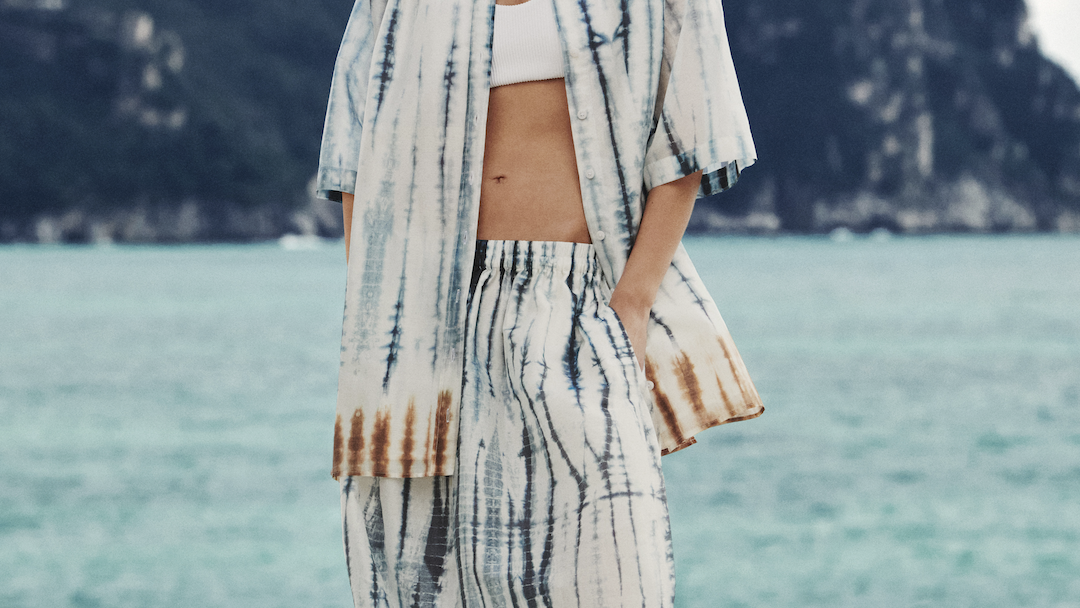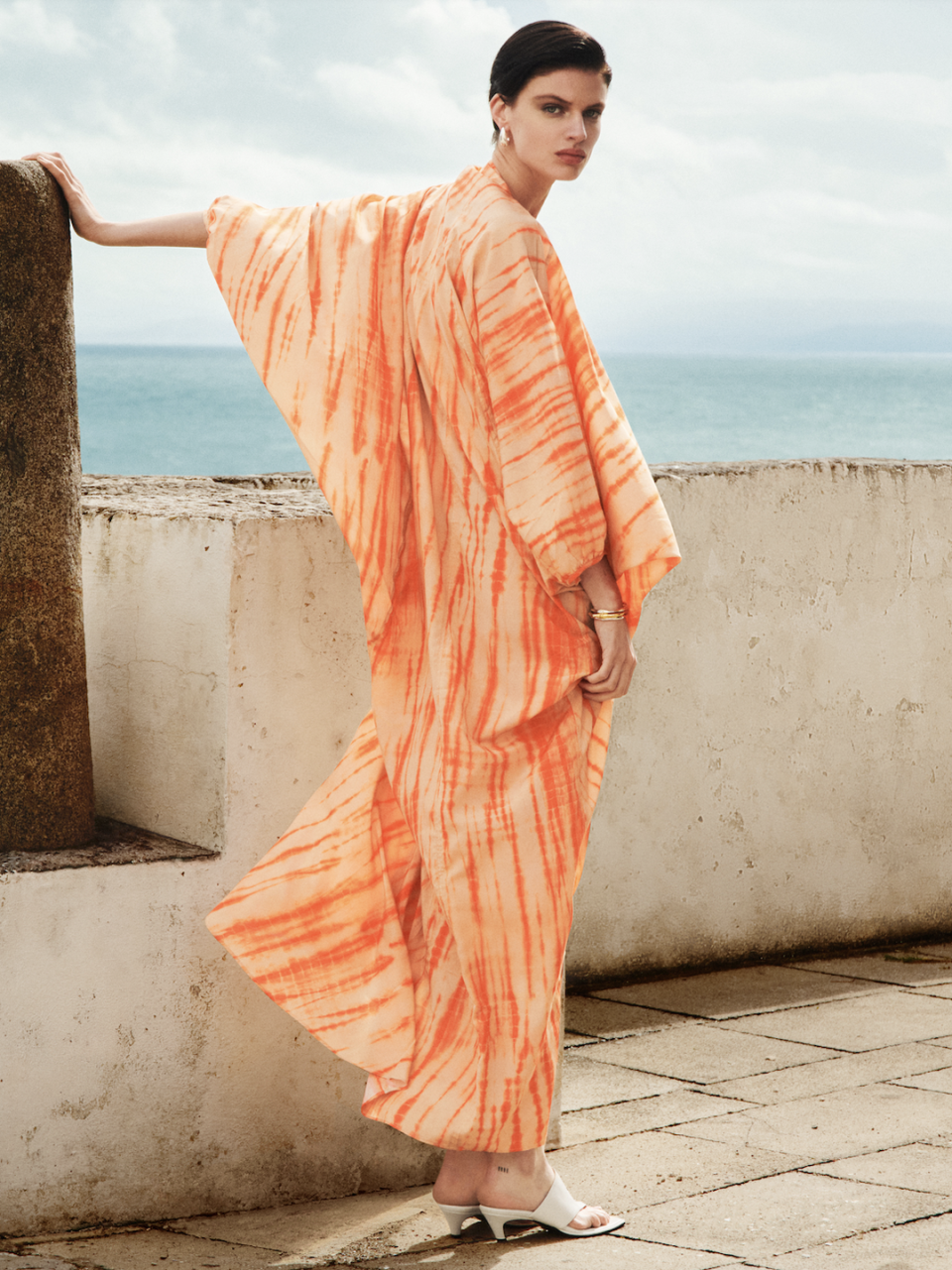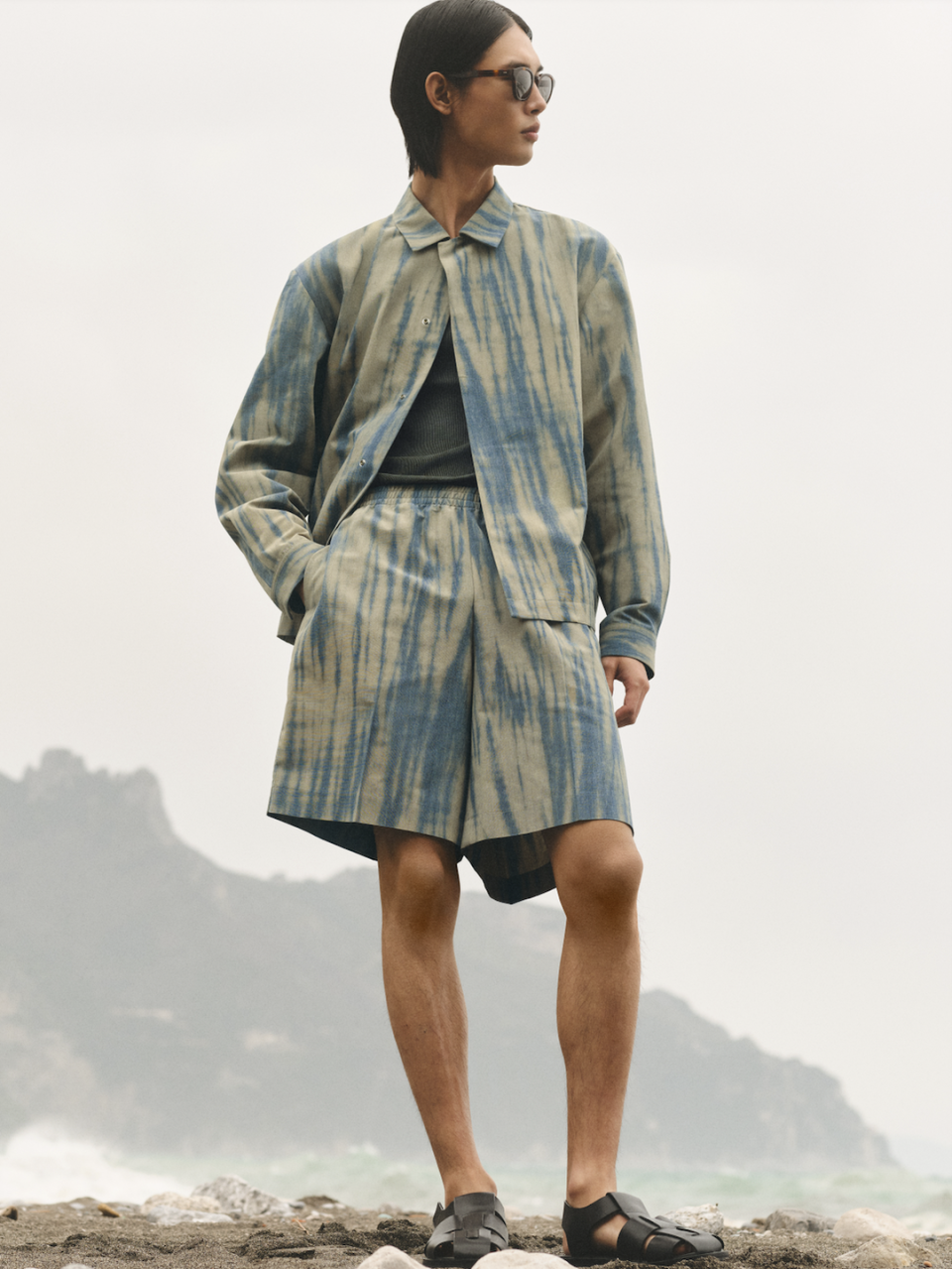COS’s New Shibori-Inspired Collection Marries Tradition and Modernity

Though Karin Gustafsson and Kazuki Tabata live (almost) worlds apart—Gustafsson in London, where she is the design director at COS, and Tabata in Kyoto, Japan—their approach to work remains wholly connected. Both center a considered approach to making—and an appreciation for doing things the slower, more methodical way. When Gustafsson came across shibori, an ancient Japanese dyeing craft that dates back to at least the eighth century, in her research, instead of reproducing a version of the prints she’d found, she decided to track down Tabata, a self-taught artisan whose family practiced the technique and passed it down.
Very few know the traditional artform, famous for its distinctive indigo and white fabric. Kazumi, originally a salaryman, was inspired to learn the craft when an uncle passed away. “At his funeral, my aunt was going to throw away the tools that he used for shibori,” he explains. Instead, Tabata inherited the tools and began teaching himself. What started as a reach-out on social media and a year of back and forth has resulted in a 13-piece collection that displays the vast array of shibori techniques at its finest. Relaxed longline blazers, fitted sleeveless tops and matching wide-leg pants showcase the tesuji shibori, where the cloth is hand-pleated over a rope core for the length of the fabric while a silk scarf utilizes the sekka shibori approach, which resembles a snowflake motif in an delightful umber and deep blue and green gradation. The perfect collection for one’s own journey into the summer season, Karin Gustafsson and Kazuki Tabata sit down with Bazaar, nestled close to Kyoto’s Myoho-in temple and Tokyokuni-Jinja shrine, to discuss their shared interests in preserving legacy while still moving forward.

How did you become aware of each other’s work?
Kazuki Shibori: I received a direct email through Instagram from COS saying they wanted to work together. I was really suspicious because I thought it was a scam, but that's how we started.
Karin Gustafsson: We wanted to explore shibiri as part of our collection, so we did research into it ourselves first, but we felt that this is something that is not something that you just do. There's so much more to it and that we really needed to learn from a real craftsman and we got the recommendations, and that's how the journey started.
What did you find particularly interesting about the shibori technique and what did you find additive to the way you approached the collection?
Karin: I found with shibori a lot of the themes are about nature and also the idea of fluidity and water, and from there, it sort of lends itself to what we were thinking. Sometimes [in design], we start with silhouettes, but in this instance, we actually started with the shibori artworks, and then sort of imagined the silhouettes and how to work with them in the best way.
Why is the art of shibori so intensive, and why is it so difficult to teach to other people?
Kazuki: To learn this technique, it usually takes about 5 to 10 years to master one technique and the longest can take up to 20 years. So people really just quit in the middle and say, “I don't want to do it anymore,” but I just continued.

Makes sense as COS has a slower, craft-based approach to design. It isn’t a brand that I think of that chases every new trend. There’s a really interesting parallel here between that and the Japanese approach to lifestyle and the craft of shibori. Why is that approach to creativity important to you?
Karin: I think it’s so important to understand the craft and the history of dressmaking, and I think what we set out to do is to really create design and fashion that lasts beyond the season. That is something that you want to keep, and that is only going to happen if you've used these sort of right techniques and ways of making in the process. We would rather focus on style before fashion and I think that goes hand in hand with this idea of things lasting for a longer time, which is really our way to think of the future as well.
How does this timeless tradition stand up in the digital age – do you think it still has something to offer?
Kazuki: I am a craftsman, my father was also a craftsman and so I’ve always been concerned with something behind. The idea of history and tradition but I also know the importance of creating new things. I just feel that should also happen with tradition in mind. To know the importance of what’s good and what’s not good.
Describe the perfect scenario that you would envisage someone wearing the collection?
Karin: When thinking of people wearing the collection, I always like when you see someone’s personality, and you see someone who has chosen to wear it in a way that really makes their personality show. I think that’s the most exciting.
You Might Also Like


